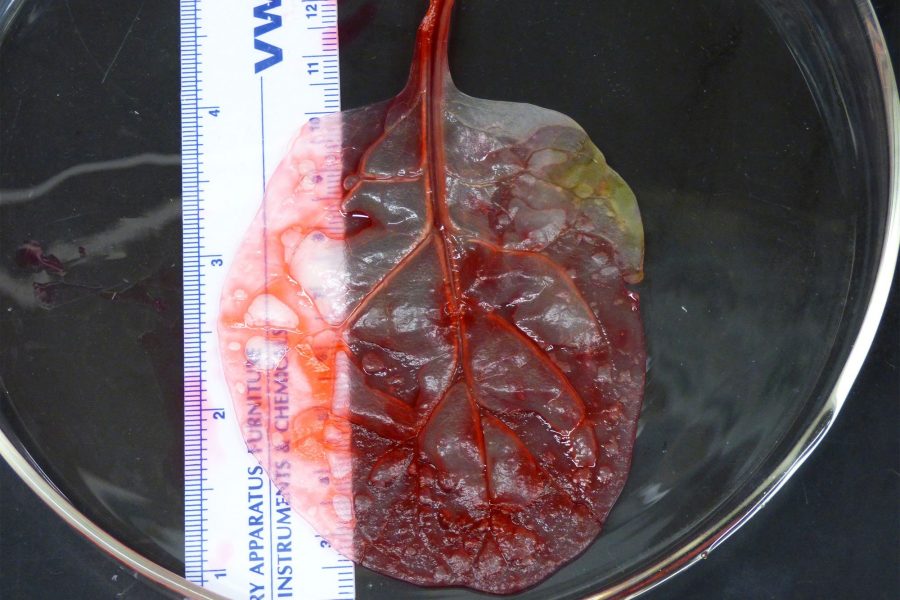The Heart Loves Spinach
Leaf your heart problems at the door.
The cellulose of the spinach is injected with red dye to demonstrate how well liquids move through. If the experiments go as planned, this dye will be replaced with blood.
April 6, 2017
Spinach is known to be one of the healthiest vegetables, and although it doesn’t give the superhuman strength as shown in cartoons, it does do more than just provide nutrients and vitamins for the body. Recently, scientists at Massachusetts’s Worcester Polytechnic Institute (WPI) have found yet another way that spinach may come to benefit human health. Through various tests, these scientists have found a way to build human heart muscle tissue using the framework of spinach leaves.
Although scientists had previously been able to create larger tissue with a sort of 3D printer, they were not able to successfully create the heart tissue. The main problem that these scientists faced was the fact that it was difficult to create both a thick heart tissue with tiny vessels that provide blood and oxygen to all the cells. Without the blood and oxygen, the tissue dies quickly.
The result was to turn to plants and their leaves. Plants use their veins to provide nutrition for their cells which is similar to the way human tissue delivers blood to the cells. Therefore it seemed logical to use the spinach for creating human tissue.
Scientists began the process by placing the leaves in a special solution that removed the plant cells from the leaves. This left a clear sheet of cellulose which was then placed into heart muscle cells. The heart muscle cells grew on the cellulose framework which was already surrounded by the leftover vessels of the leaf. Within a few days, these cells began to beat like a regular human heart would.

Each leaf is placed in a solution which removes all the plant cells and leaves a clear cellulose frame.
In order to see that the vessels worked, they used red food dye instead of blood. This liquid proved that the experiment was a success. If dye could run its course smoothly through the newly made tissue, so could blood and oxygen. As far as the experiments, all the cardiac muscle appears to act normally. Roxane Fournier (9) thinks that “if it works and has no bad side effects, then it could be very useful and benefit those who have heart problems.” Though the research could take a while, she adds, “it could help a lot of people in the future [so] they should continue.”
Although much work is to be done, this sort of discovery could eventually lead to the replacement of damaged tissue for those who suffer from heart attacks and other heart problems. By stacking the leaves together, scientists hope they can make thick heart tissue which acts as normal human tissue.
Spinach is not the only plant being used. Scientists are now testing a variety of plants such as parsley and exotic leaves. Some even claims that cauliflower and broccoli, if they went through the same process, could eventually be used for lung tissue.
Watch the whole video here.
Sources: youtube.com, news.nationalgeographic.com, and washingtonpost.com






































